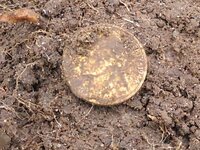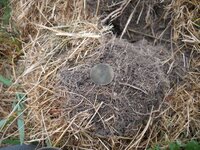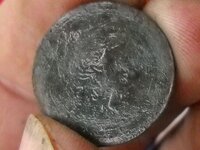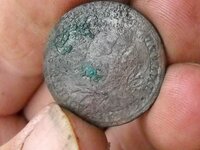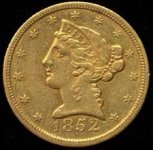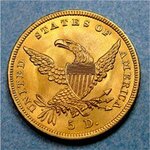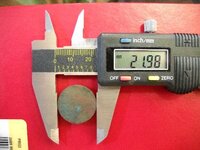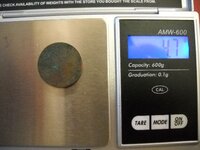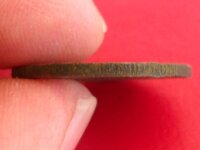juju
Bronze Member
- Dec 8, 2007
- 2,015
- 17
- Detector(s) used
- Whites MXT ALL PRO, Grey Ghost Headphones, Garrett Pro-Pointer
- Primary Interest:
- Metal Detecting
Howdy all,
Decided to give the jewelry hunting a break for a day, and do some old coin hunting. First keeper was the 1944 S war nickel. Any silver counts in my book. I was lucky to get this one since I have hunted this place to death. After this I spent an hour not getting any tones and decided to move on. I headed to the site that gave up the 1897 mechanical dollar earlier this year. The only keeper was this coin. I at first thought it was a token and was stoked. Upon a little cleaning I noticed the image was incuse, and backwards. It appears that someone tried to make a counterfeit five dollar gold coin. I figure the folks here can help me sort it out. Not sure if these fakes have a value, but it will look cool in the book. Thanks for lookin and luck in the hunt.

JuJu
Decided to give the jewelry hunting a break for a day, and do some old coin hunting. First keeper was the 1944 S war nickel. Any silver counts in my book. I was lucky to get this one since I have hunted this place to death. After this I spent an hour not getting any tones and decided to move on. I headed to the site that gave up the 1897 mechanical dollar earlier this year. The only keeper was this coin. I at first thought it was a token and was stoked. Upon a little cleaning I noticed the image was incuse, and backwards. It appears that someone tried to make a counterfeit five dollar gold coin. I figure the folks here can help me sort it out. Not sure if these fakes have a value, but it will look cool in the book. Thanks for lookin and luck in the hunt.
JuJu
Attachments
Upvote
0


